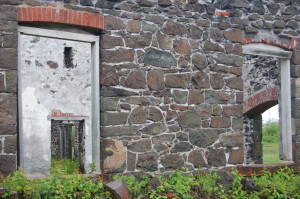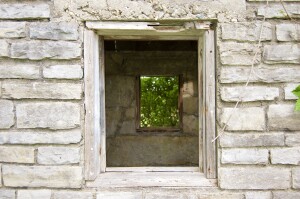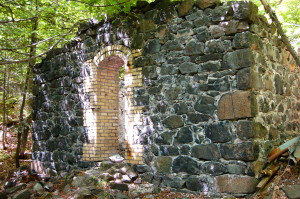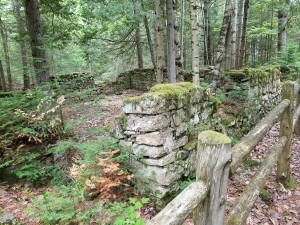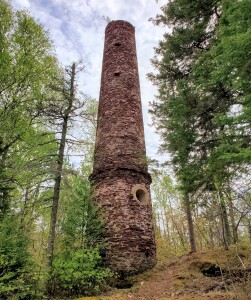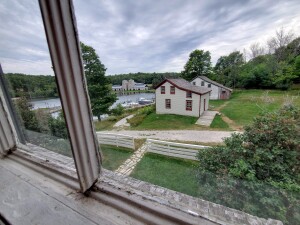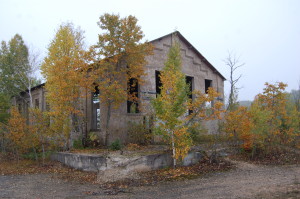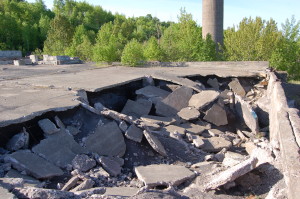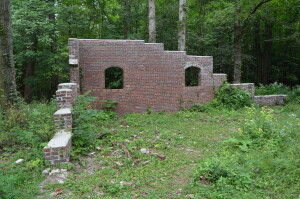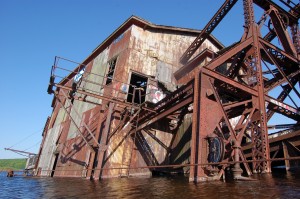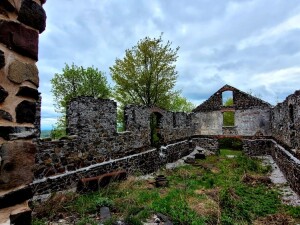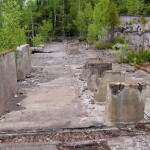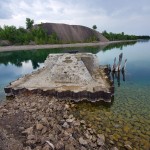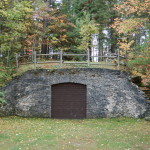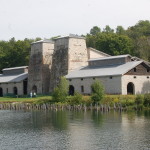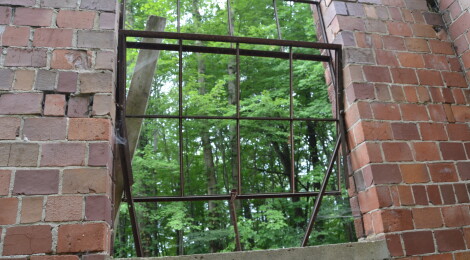
10 Michigan Abandoned Places and Ruins Worth Checking Out
Abandoned places and ruins continue to fascinate travelers, as they provide a window into the past as well as some amazing pictures. Many Michigan abandoned places and ruins sites are easy to find and visit, and we have been fortunate enough to have the chance to see many of them in person. While we are always looking to explore sites we haven’t yet been to, we decided to take a minute to highlight some of the amazing ones we have been to in this list. Today we will share 10 Michigan Abandoned Places and Ruins Worth Checking Out, sharing pictures from our visits and letting you know how you can visit too. When visiting any of these sites it is important to respect private property and to “leave nothing but footprints, take nothing but pictures.” We hope you enjoy this list and we hope to be back soon with a list of 10 more incredible sites.
American Wooden Rim Factory Ruins (Awakon Park, Onaway) – Onaway was once the leading producer of wooden steering wheels for automobiles and wooden bicycle rims. Awakon Park has interpretive signs detailing what each set of ruins used to be, and used to be home to the sculpture art work of Tom Moran. You’ll see a large steering wheel with the phrase “Onaway Steers the World” when you visit. Awakon Park is located on M-33 in Onaway, just west of Michigan Ave.
Central Mine Ruins (Keweenaw County) – Close to 1,200 people once lived in Central and the mine produced more than 50 million pounds of copper during its 40+ years of operation. Now, some of the old miners’ homes here are privately owned, while others are open during the summer thanks to the Keweenaw County Historical Society. Most of the ruins here are marked off against exploration, but trails lead to the old powder house (pictured) ruins as well as the foundations of several homes and a school. The Central Mine Historic District is located on the west side of U.S. 41, about four miles past Phoenix and the U.S. 41/M-26 split.
Cheboygan Lighthouse Ruins (Cheboygan State Park) – The foundation of the 1859 lighthouse here is all that remains. This light replaced a previous one that had been built too close to the shore of Lake Huron. The ruins can be reached after hiking the Green Trail for about a mile from the parking area. Cheboygan State Park is located at 4490 Beach Rd. in Cheboygan.
Clark Mine Ruins (Copper Harbor) – Near the Estivant Pines Sanctuary in Copper Harbor, piles of tailings and a tall chimney remain where the Clark Mine once operated. This mine ran from 1853-1902 and rockhounds still search its grounds for elusive bits of copper and other minerals. From Copper Harbor, head south on Manganese Rd. and follow it past Lake Fanny Hooe Resort and Campground and Manganese Falls. Continue on until you reach a split, Clark Min Rd. will be the left fork while the right fork is marked for Estivant Pines.
Fayette Ghost Town (Fayette Historic State Park, Garden) – One of the Upper Peninsula’s most accessible ghost towns, Fayette is incredibly well preserved and you can even tour inside some of the homes and buildings. Now part of Fayette Historic State Park, this town was once home to 500 people and a thriving iron smelting operation. From Us-2 west of Thompson, head south on M-183 for about 18 miles and look for the state park signs. Maps are available at the visitor center to help identify each building.
Fiborn Quarry Ruins (Fiborn Karst Preserve, Trout Lake) – A limestone quarry operated at Fiborn from 1905 until 1936. Standing here today you may find it hard to believe a whole village once existed here. Today you can see the remnants of a powerhouse, ore car loading station, railroad car storage building, and more. From the intersection of M-123 and Trout Lake Rd. head west on Trout Lake Rd. for a little more than five miles. After crossing a small creek there will be an unmarked road to the north, this is Fiborn Quarry Rd. Follow it to the parking area, it will be easy to tell if you’re on the right road or not within a mile.
Freda Stamp Mill Ruins (Freda, Houghton County) – From the Keweenaw Convention and Visitors Bureau: “At its peak, the community of Freda had around 500 residents, but it is sparsely populated today. Freda was owned and maintained by the Champion Mining Company and largely existed to serve the large Champion Copper Mill, which processed copper-bearing rock from the nearby Champion Mines. With the mill’s closure 1967, much of the population left. The mill processed copper-bearing rock using five large stamps which crushed the minerals into pieces. Water from Lake Superior was added, and the pieces were pulverized by iron balls. A slurry solution resulted containing forty percent copper or more. This was hauled by rail to the smelter in Houghton to create copper ingots.” The route to Freda can be tricky, from U.S. 41 we headed west on Houghton Canal Rd. then turned left on Cole Creek Rd., then followed it as it turns into Covered Dr. We then took a left on Liminga Rd., stopped at the Redridge Steel Dam, then continued on to the Freda ruins and visitor parking area at the end of Superior View Rd.
Lincoln Brick Factory Ruins (Lincoln Brick Park, Grand Ledge) – The 90-acre park has three miles of trails, and lots of interpretive signs that tell about the years of brick production that took place here. Lincoln Brick Park is located at 13991 Tallman Rd. in Grand Ledge. There is a $5 daily pass fee for non-residents ($3 for Eaton County residents).
Quincy Dredge #2 (in Torch Lake, Houghton County) – You can get a decent view of the Quincy dredge from land (M-26 near Mason), but in 2020 we chose to get up close by kayak. The dredge was constructed to reclaim stamp sand for more processing, which was quite an improvement in mining technology at the time. The history of this dredge dates back to 1914 when it was built for the Calumet and Hecla Mining Company. It was then known as Calumet and Hecla Dredge Number One and was used at a reclamation plant in Lake Linden. The dredge was sold to the Quincy Mine in the 1950s, where it joined their dredge and was renamed as Quincy Dredge Number Two. In regular use until the late 1960s, it sank during winter lay-up and the Quincy reclamation plant was closed soon after. We spent almost an hour paddling around this massive structure and peering inside, definitely one of my favorite kayak trips to date!
Quincy Mine Ruins (Keweenaw National Heritage Park, Hancock) – Visitors to the Quincy Mine are able to see the Number 2 Hoist House and enter the mine on tours. Walking around the grounds offers up what seems like an endless supply of crumbling walls of former mine buildings. This mine was incredibly profitable from the 1840s to the 1940s and was one of the first to try and attract better workers by offering better conditions and benefits. Across the road you can check out the Quincy Dryhouse Ruins. The Quincy Mine is located at 49750 U.S. 41 in Hancock.

